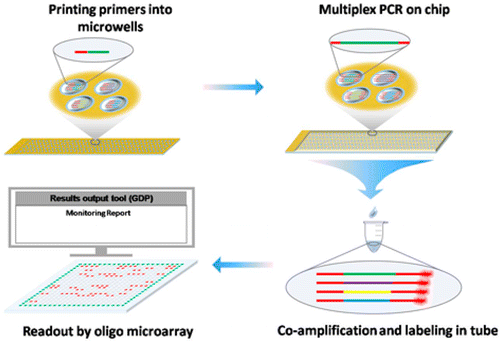First comprehensive test to detect genetic modification in food

As the abundance of genetically modified (GM) foods continues to grow, so does the demand for monitoring and labeling them. The genes of GM plants used for food are tweaked to make them more healthful or pest-resistant, but some consumers are wary of such changes. To help inform shoppers and enforce regulations, scientists are reporting in ACS' journal Analytical Chemistry the first comprehensive method to detect genetic modifications in one convenient, accurate test.
Li-Tao Yang, Sheng-Ce Tao and colleagues note that by the end of 2012, farmers were growing GM crops on more than 420 million acres of land across 28 countries. That's 100 times more than when commercialization began in 1996. But doubts persist about the potential effects on the environment and human health of these biotech crops, created by changing the plants' genes to make them more healthful or more able to resist pests. In response, policymakers, particularly in Europe, have instituted regulations to monitor GM products. Although researchers have come up with many ways to detect genetic modification in crops, no single test existed to do a comprehensive scan, which is where Yang and Tao come in.
They developed a test they call "MACRO," which stands for: multiplex amplification on a chip with readout on an oligo microarray. It combines two well-known genetic methods to flag about 97 percent of the known commercialized modifications, almost twice as many as other tests. It also can be easily expanded to include future genetically modified crops.
More information: "MACRO: A Combined Microchip-PCR and Microarray System for High-throughput Monitoring of Genetically Modified Organisms" Anal. Chem., Article ASAP DOI: 10.1021/ac403630a
Abstract
The monitoring of genetically modified organisms (GMOs) is a primary step of GMO regulation. However, there is presently a lack of effective and high-throughput methodologies for specifically and sensitively monitoring most of the commercialized GMOs. Herein, we developed a multiplex amplification on a chip with readout on an oligo microarray (MACRO) system specifically for convenient GMO monitoring. This system is composed of a microchip for multiplex amplification and an oligo microarray for the readout of multiple amplicons, containing a total of 91 targets (18 universal elements, 20 exogenous genes, 45 events, and 8 endogenous reference genes) that covers 97.1% of all GM events that have been commercialized up to 2012. We demonstrate that the specificity of MACRO is 100%, with a limit of detection (LOD) that is suitable for real-world applications. Moreover, the results obtained of simulated complex samples and blind samples with MACRO were 100% consistent with expectations and the results of independently performed real-time PCRs, respectively. Thus, we believe MACRO is the first system that can be applied for effectively monitoring the majority of the commercialized GMOs in a single test.
Journal information: Analytical Chemistry
Provided by American Chemical Society

















